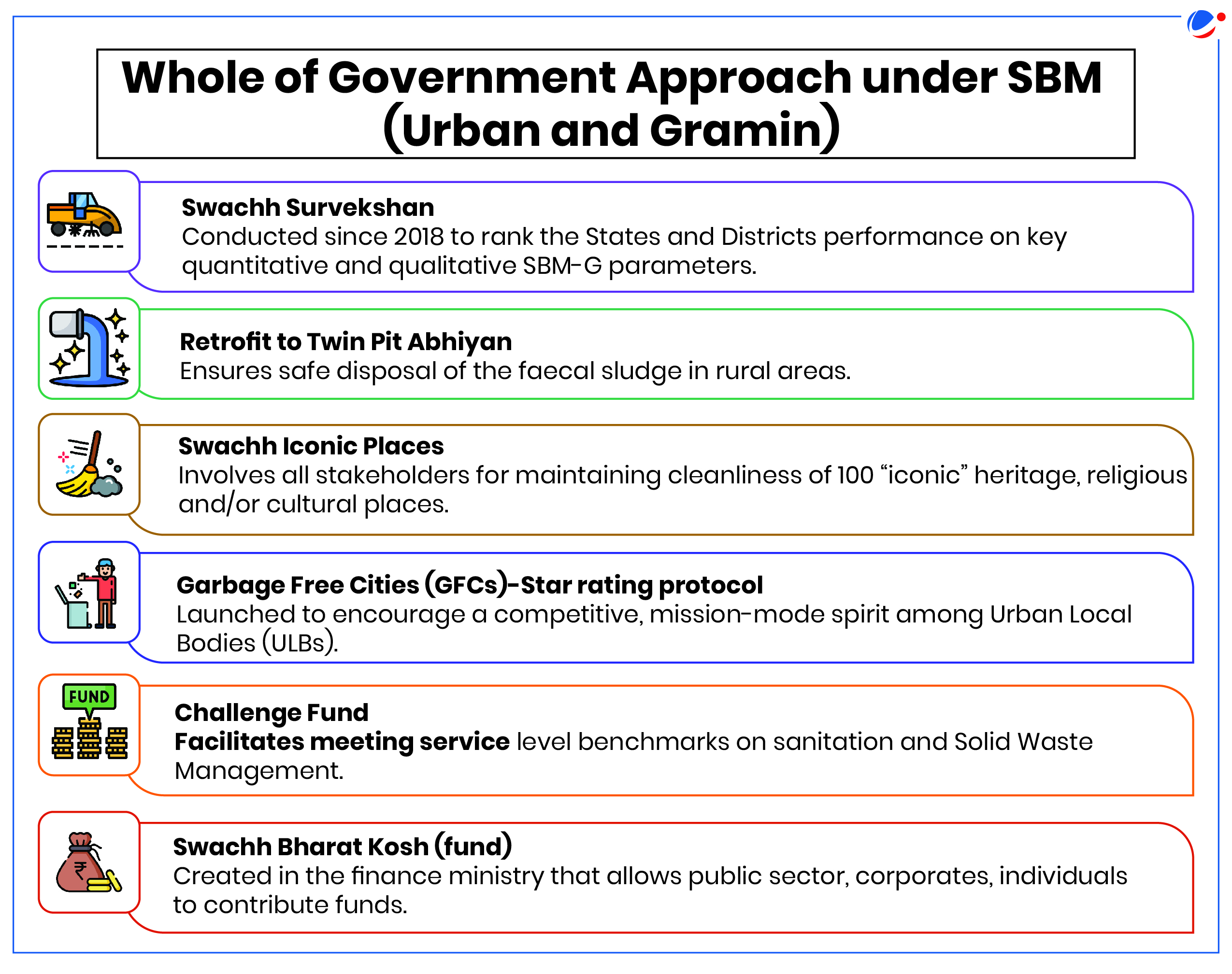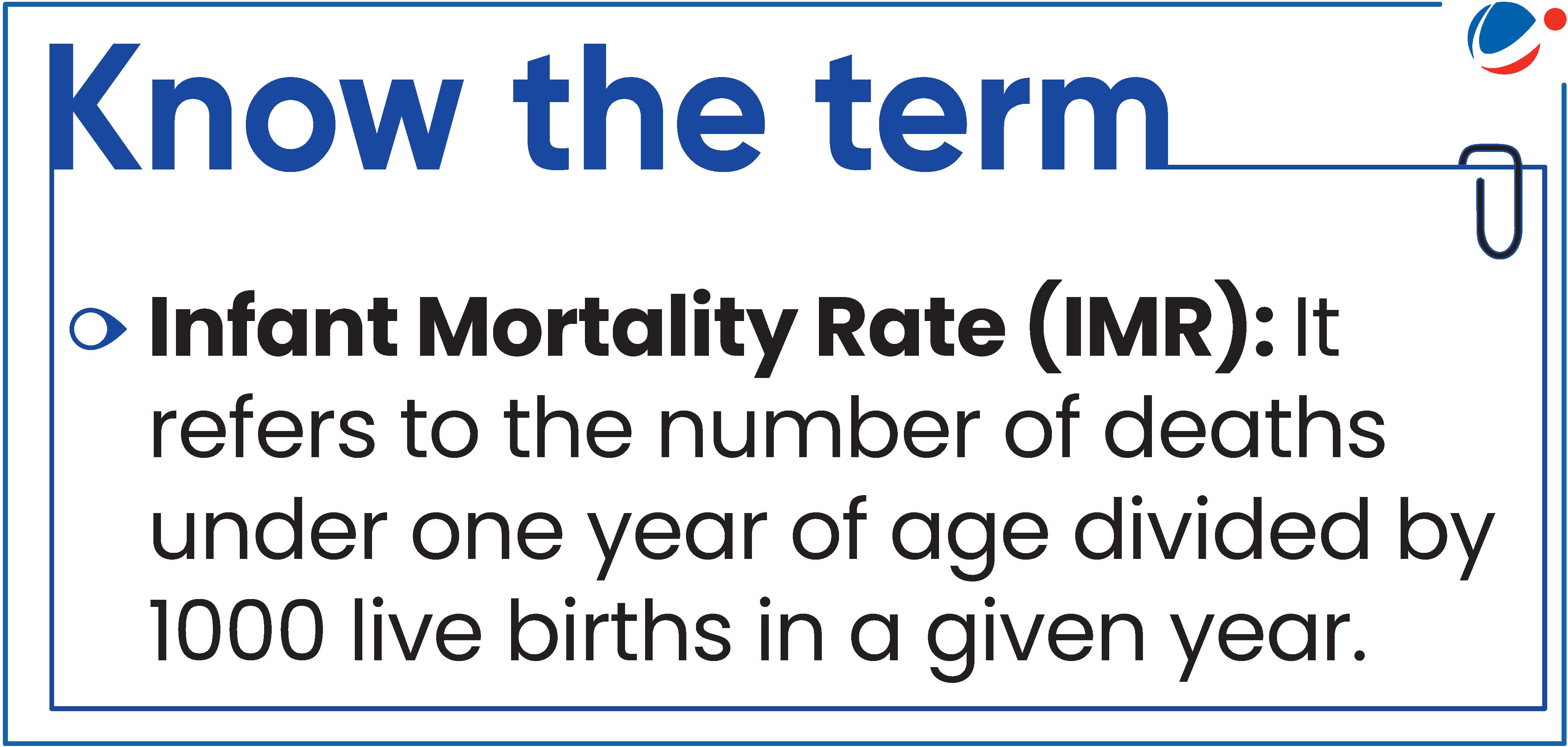Why in the News?
Swachh Bharat Mission (SBM) has completed 10 years of its launch.
More about the News
- Swachh Bharat Diwas 2024 was celebrated to commemorate 10 years with theme 'Swabhav Swachhata, Sanskaar Swachhata' built around three core pillars:
- Swachhata Ki Bhaagidari: Public participation, awareness, and advocacy for Swachh Bharat.
- Sampoorna Swachhata: Mega cleanliness drives targeting difficult and dirty spots (Cleanliness Target Units).
- SafaiMitra Suraksha Shivir: Single-window service, safety, and recognition camps for sanitation workers' welfare and health
About SBM
- Genesis: Launched on 2nd October, 2014 (birthday of Mahatma Gandhi) as a national movement.
- Objective: Accelerate the efforts to achieve universal sanitation coverage and to put the focus on sanitation.
- Sub-missions: It has 2 Sub-missions (Both are Centrally Sponsored Scheme)
- Swachh Bharat Mission (Gramin): Under Ministry of Jal Shakti
- SBM (G) Phase-II (2020-21 to 2024-25) is under implementation.
- Swachh Bharat Mission (Urban): Under Ministry of Housing and Urban Affairs (MoHUA)
- SBM-U 2.0 Phase II is under implementation till 2026.
- Swachh Bharat Mission (Gramin): Under Ministry of Jal Shakti
- Adopts a 'Whole of Government Approach' (see infographic)

- Significance of SBM: The scheme has improved Water, sanitation and hygiene (WASH) in India and played a role in improving Health, Social and Environmental Outcomes.
Transformative role of SBM in improving Health, Social and Environmental Outcomes

- Maternal and Newborn health: As per a research, districts with > 30% toilets constructed under SBM corresponds with 5.3 lower Infant Mortality Rate (IMR) and 6.8 lower Under-five Mortality Rate (U5MR).
- SBM saved the lives of 60 to 70 thousand children every year by curbing Open defecation which is a source of water and food contamination.
- Diseases: 300,000 fewer diarrheal deaths in 2019 compared to 2014. (WHO report)
- Cases of wasting among children are 58% higher in non-Open Defecation Free areas (The Bill & Melinda Gates Foundation).
- Student enrolment: Poor WASH facilities act as a barrier to student attendance and enrolment, especially girls.
- Violence against women: With better access to sanitation facilities, 93% of women reported feeling safer at home. (UNICEF)
- Savings in health expenditure: Due to cleanliness, an average of 50,000 rupees was being saved every year by families in villages, earlier being spent as out of pocket expenditure to cure diseases. (UNICEF)
- Livelihood Opportunities: About 1.25 crore people were employed in one form or another. (UNICEF)
- Environmental: 12.70 times less likelihood of groundwater contamination reported traceable to humans. (UNICEF)
Why has SBM been successful in improving health, social and Environmental Outcomes?The success of SBM lies in its new approach of combining toilet construction with community engagement and substantial investments in IEC (Information, Education and Communication) to bring behavioural change.
|
Major issues with SBM
- Behavioural change: During surveys, in many households it has been found that toilets are being used as storage of cow dung etc.
- Infrastructure: Inadequate waste management systems, and sewage treatment plants etc.
- Low quality of raw materials being used in the construction of toilets under SBM-G.
- Availability of water: States with poor access to water in toilets have a higher share of households contributing to open defecation.
- Funding: Allocation of budget declined from ~16000 crore in 2017-18 to ~7000 crore in 2024-25.
- Also, fund utilisation for IEC activities has also declined.
- Solid and Liquid Waste Management (SLWM): Lack of waste segregation and dispersed population further creates roadblocks in bringing economically viable market-based solutions.
Way Forward
- Behavioural change: This should be done through mechanisms such as extensive awareness campaigns.
- IEC interventions under the Mission must be utilised effectively for creating awareness about SLWM.
- Standard Infrastructure: For effective Sanitation, nodal agencies need to ensure that the standard quality raw materials are used.
- Water availability: Provision of water availability should be prioritised along with construction of toilets to attain ODF status across all villages.
- Reliable Data: Information on ODF declared villages/cities must be collected accurately on a continuous basis, either through an institutional mechanism or through resurveys.
- Utilising Unspent balances: In case the State Implementing Agencies are not utilising the normal allocation, the government may frame state specific action plans to liquidate the unspent balances.
- Release of central share: Installments of central share should be released strictly only after- ascertaining the veracity of Utilisation Certificates (UCs) received by the central government from states.



